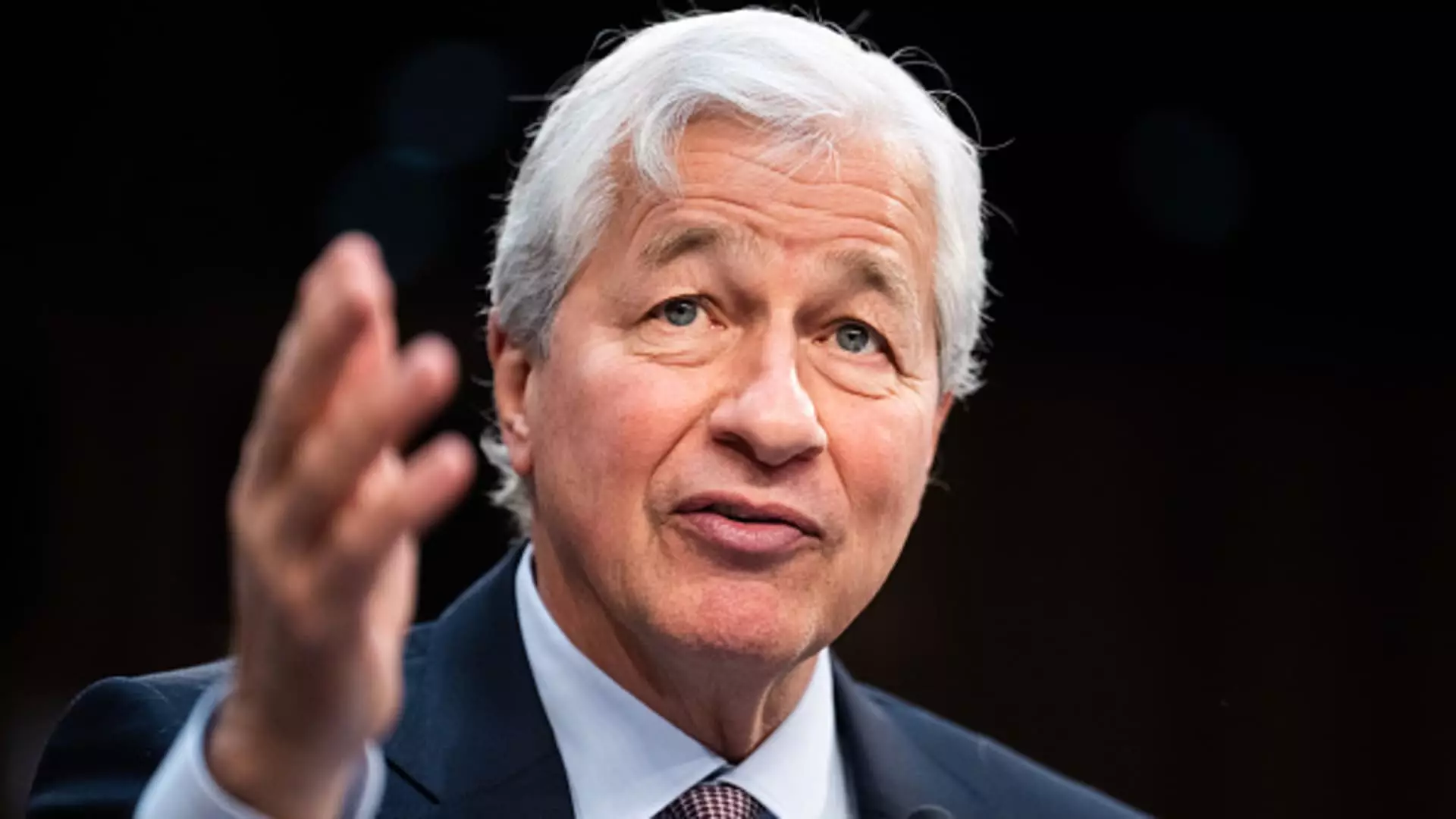In the aftermath of President Donald Trump’s recent tariff announcement, a palpable tension has settled over Wall Street. Investors who once thrived on the belief that the pro-business agenda would lead to uninterrupted growth have found themselves grappling with unprecedented market volatility. The dive in stock prices not only shattered the optimism surrounding the economy but also starkly revealed that Wall Street’s reactions might no longer be aligned with Trump’s ambitious plans. It raises serious questions about the fragility of investor confidence and the possible perils that lay ahead as an administration seemingly willing to embrace economic pain for ideological gains.
The stark contrast between Wall Street’s expectations and the political realities of Trump’s governance is still unfolding. Analysts such as R. Scott Siefers of Piper Sandler are beginning to wreck the façade that characterized the previous Trump presidency, acknowledging that the current climate is one of retrenchment. In everyday terms, this means investors are realizing that black-and-white representations of economic stability may be severely flawed. By prioritizing Main Street over Wall Street in such an overt manner, the administration risks alienating not just the financiers, but the broader populace who depend on market health for their livelihood.
Trump’s Tolerance for Investor Pain
One of the most alarming realizations from the recent market turmoil is Trump’s disturbing readiness to inflict pain on Wall Street as a means to achieve his economic goals. The president has demonstrated an unrestrained willingness to gamble with the financial well-being of investors. Surely, nothing embodies this better than his directly acknowledging that markets must adjust so Main Street can thrive, implicitly throwing investors under the proverbial bus. This jarring revelation emphasizes the administration’s potentially reckless approach to economic policy, sparking fears that the markets may wobble at any moment due to political gamesmanship.
America’s leadership cannot afford to play chicken with global trade relations. When major financial institutions, once considered stalwarts of market stability, begin to show signs of weakness, it indicates that Trump’s hands-off approach may not be sustainable. Underestimating the fallout of aggressive tariffs could incite not just discontent within the ranks of investors, but also pose a genuine threat to economic stability domestically and abroad.
The Deteriorating Ripple Effects
As recent events showcase, a sell-off in the Treasury market illuminated the fears that institutional investors might be rattling the broader economic cage. With yields rising sharply, it became clear that Trump’s tariff strategy is more than a blip on a chart; it might become a severe economic contagion. History will remember these moments as critical junctures where financial architectonics were shaken down to their very foundation by policy decisions that felt more impulsive than measured.
Notably, the anxiety surrounding potential financial crises and the term “bond vigilantes” surfaces in discussions regarding the president’s policies. When investors take it upon themselves to hold governments accountable for perceived fiscal irresponsibility, it signals a shift in power dynamics that Trump might poorly gauge. In a world where the market often serves as a barometer for broader economic health, the threat of disarray looms ever larger.
Retreat into Regulatory Uncertainty
The mystique of Trump’s presidency has always been wrapped in bold declarations and audacious promises. Yet the hesitation now experienced by members of the financial sector hints that the administration’s erstwhile influence may not carry the same power. As banks are left vulnerable to a toxic cocktail of erratic policymaking and an uncertain regulatory environment, traditional economic forecasts fall by the wayside in favor of this “chaos discount,” a term coined to define the ever-present instability stemming from indiscriminate tariff policies.
Financial institutions relied on the previous order of things—namely, stable regulatory environments and predictable market signals—but suddenly find their entire calculus upended. This environment fosters unpredictability not just in earnings estimates but also in overall investment decisions. Executives are left scrambling to navigate the treacherous waters of economic discourse, leading to stunted growth initiatives and panic in mergers and acquisitions. Such uncertainty raises further questions about how effectively banks can serve their critical role in fueling national economic growth when political winds change direction so rapidly.
Short Lived Respite: The Uncertain Horizon Ahead
The day where markets surged with relief after Trump rolled back significant tariffs is but a fleeting moment in a larger saga of duality. Bear market conditions have become the order of the day, and the magnitude of lack of resolution in the trade dispute between the U.S. and China compounds the sense of foreboding; one has to wonder if the exuberance will hold. Despite temporary reprieves, the backdrop of high tariff rates remains—a constant irritant that markets and consumers will both grapple with as time unfolds.
As the first-quarter earnings season approaches, corporate leaders are poised to face a barrage of questions regarding not just their own stability but the future of economic order under Trump’s volatile governance. With a precarious balance achieved only through a combination of market gymnastics and presidential acknowledgment, investors must prepare for the possibility that the current calm is deceptively shallow, foreshadowing turbulent waters ahead. The political landscape surrounding tariffs continues to shift in unexpected directions; markets must be prepared for the inevitable fallout.

